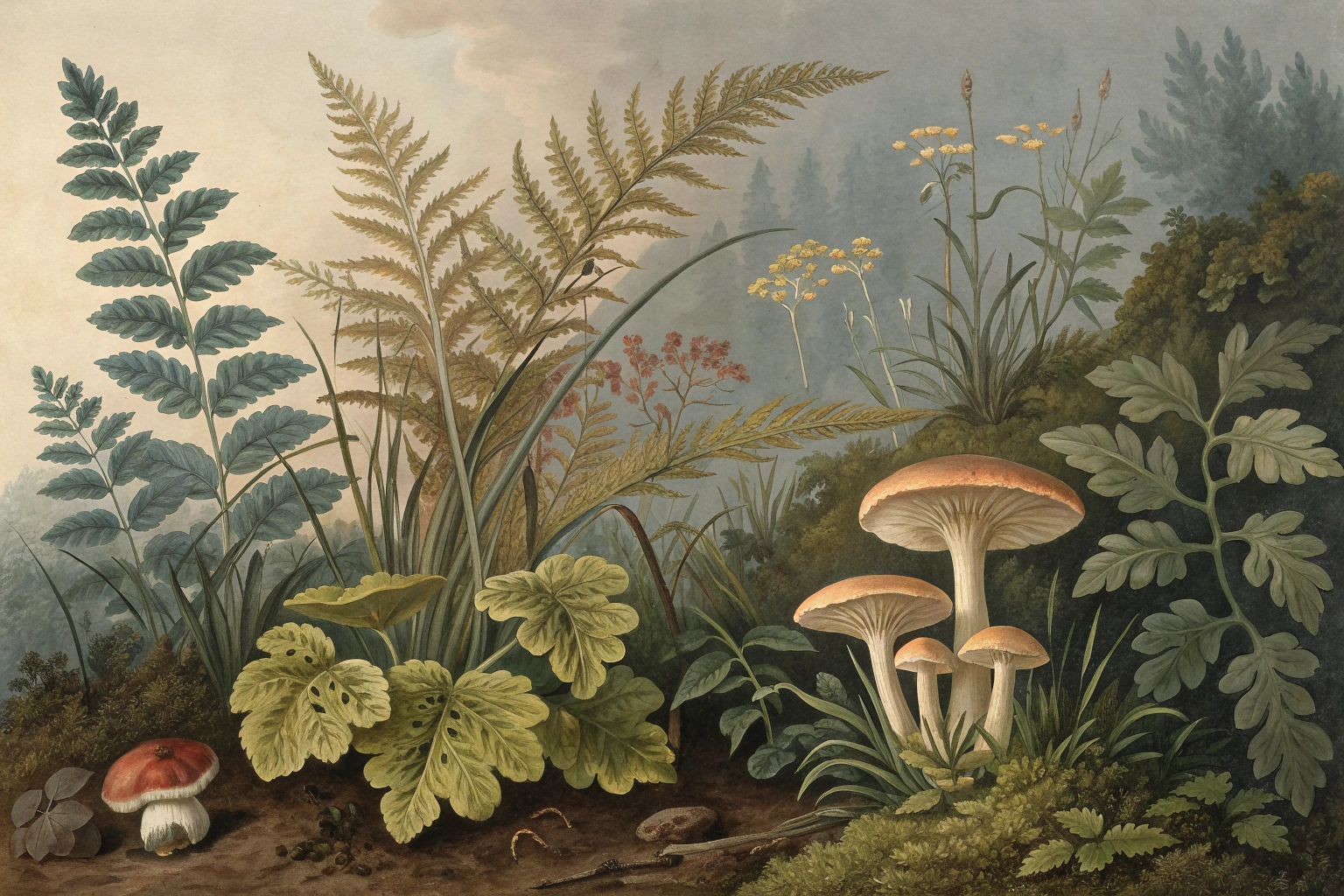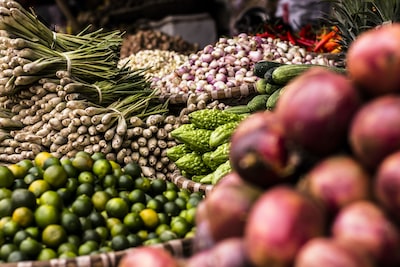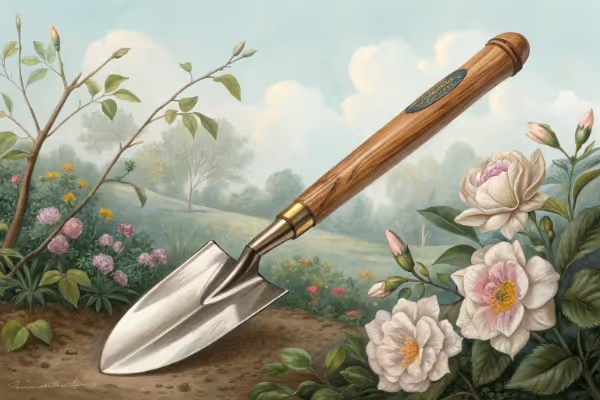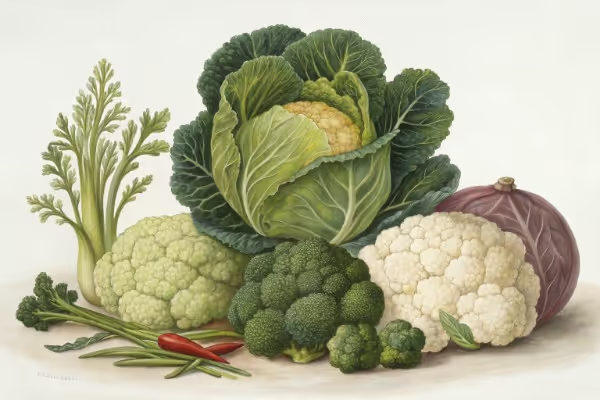Low-Light Edibles: Food Plants That Don’t Need Full Sun

Low light edible plants
Grow low light edible plants in shade: greens, herbs, and scallions thrive with 2–4 hours indirect sun. Start low light edible plants like lettuce, spinach, mint, chives, and parsley in pots; water evenly; harvest baby leaves in 3–4 weeks. Place low light edible plants where they catch morning light or bright shade; feed with diluted compost tea monthly; keep soil moist.
These small-space staples taste clean, hit fast, and keep your kitchen humming—stick around for the short list and how to nail it.
Cheatsheet: Edible Plants for Shady Spaces
🌱 Best Low-Light Edibles
- Lettuce (Lactuca sativa): loose-leaf types thrive in 3–4 hrs indirect light
- Mint (Mentha): tolerates dim corners, prolific harvest
- Chives (Allium schoenoprasum): snip for flavor, needs minimal sun
- Spinach (Spinacia oleracea): 2–4 hrs dappled light, quick regrowth
- Arugula (Eruca vesicaria): nutty taste, shade-tolerant
- Parsley (Petroselinum crispum): robust, shady windowsill survivor
- Microgreens: rapid harvest, shallow trays, low light
- Mustard greens: spicy, semi-shade
- Kale (baby): tender, 3–4 hrs filtered sun
🍃 Health & Self-Sufficiency
- Boost vitamin K, A, C, folate, and antioxidants at home
- Harvest in 20–45 days for continual supply
- Snip outer leaves to encourage regrowth and maximize output
🛠️ Tools and Products You'll Need
- Shallow containers or pots (6–8 in / 15–20 cm deep)
- Quality organic potting mix
- Drainage trays
- Seeds or starter plants
- LED grow light (optional, 5000–6500K, 2–3 watts per plant)
- Scissors or snips for frequent harvesting
🌤️ Light & Water Tips
- Indirect sunlight, north or east windows work best
- Supplement with grow light if under 3 hrs of natural light
- Keep soil moist, not soggy; water once soil feels dry 1 in / 2.5 cm below surface
- Avoid cold drafts; temperatures 60–75°F / 16–24°C ideal
📝 Simple Steps to Success
- Fill pots with moistened potting mix
- Sow seeds shallow, cover lightly, or transplant starts
- Place in low-light spot or under grow light, 6–12 in / 15–30 cm above foliage
- Water when topsoil dries; avoid waterlogging
- Harvest outer leaves or pinch tops weekly
🌟 Stat
Leafy greens can deliver up to 85% of daily vitamin K in one cup, even when grown indoors.
Low light edible plants: the shady pantry
I stopped trying to ripen tomatoes under a maple canopy and started cutting salads that tasted like cold mornings in spring. The trick is picking Low light edible plants and leaning into their biology, not wrestling with it.
Low light in gardens usually means bright shade or 2 to 4 hours of direct sun, often in the morning. Fruiting crops sulk there, but greens, herbs, shoots and a few roots earn their keep.
What low light really means for edible production
Plants run on photons, and growers use DLI, or daily light integral, to describe how many land on a leaf in a day. Leaf crops can perform at modest DLI, while fruiting crops need a lot more.
“Full sun” is 6 or more hours of direct light per day, while “partial shade” lands between 3 and 6 hours. Source: University extensions commonly define these categories for home gardens.
A cheap light meter and a notebook taught me more than a year of guessing ever did. Midday under my pergola hits 80 to 150 μmol m−2 s−1, which is enough for lettuce yet laughable for peppers.
Top low light edible plants that actually produce
Leafy workhorses
- Lettuce, especially looseleaf and butterhead. Needs 2 to 4 hours direct or bright open shade, space 6 to 8 in, harvest baby leaves at 25 to 35 days.
- Spinach and New Zealand spinach. Cool soil yields better flavor, keep it at 45 to 70 F (7 to 21 C), pinch often to slow bolting.
- Asian greens like tatsoi, mizuna, komatsuna, and pak choi. Shade keeps stems mild, succession sow every 10 to 14 days.
- Kale and collards as baby leaf. Lower light builds tender foliage, cut at 20 to 30 days and resprout twice.
- Swiss chard. Handles 3 to 5 hours, harvest outer stalks, let the crown refill.
- Arugula. Best in cool shade, spicy at 40 to 60 F (4 to 16 C), sweeter with steady moisture.
Herbs that thrive in shade
- Parsley, flat or curly. Tolerates 3 hours sun, slow to start, then steady for months.
- Cilantro. Prefers cool partial shade, sow little and often for constant leaf and green seed.
- Mint and lemon balm. Spreads, so container it, sheer for continual flushes.
- Chives and garlic chives. Evergreen clumps in bright shade, flowers edible.
- Chervil and sweet cicely. Aniseed leaves for salads and dessert fruit.
- Sorrel. Perennial lemony leaves, harvest small and frequent.
Roots that tolerate shade if you eat the greens
- Beets. Roots shrink in shade, greens shine, pick outer leaves and thin for small bulbs.
- Radishes. Sow in cool months, 3 to 4 hours sun, choose quick 20 to 30 day types.
- Turnips, especially Tokyo types. Eat the tops and young roots, steady water prevents pithy centers.
- Spring onions. Slim stalks form with 3 to 5 hours, harvest in bunches.
Perennial and woodland edibles for deep shade
- Ramps and wild leeks where legal and suitable. Slow growers, never strip a patch.
- Ostrich fern fiddleheads. Only harvest tightly coiled heads, cook fully.
- Hosta shoots. Blanched shoots taste like mild asparagus, cut early and sparingly.
- Alpine strawberries. Fruit in dappled light, more aroma than size.
- Wasabi in cool, humid shade. Rhizomes take patience, leaves and stems are great pickled.
- Hardy ginger in warm zones or containers. Leaves and rhizomes for tea and cooking.
Indoors and windowsill staples
- Microgreens. Quick 7 to 14 day crops, low to moderate light, high density trays.
- Pea shoots and sunflower shoots. Crisp tendrils in 10 to 20 days, bottom water for clean harvests.
- Mushroom kits like oyster and lion’s mane. Fruiting prefers low light and high humidity, perfect for basements.
Quick comparison by light level
- Bright indirect only: microgreens, mint, chervil, chives, sorrel, mushroom kits.
- 2 to 3 hours direct sun: lettuce, spinach, arugula, Asian greens, parsley, cilantro.
- 3 to 5 hours direct sun: chard, kale baby leaf, scallions, radish, beets for greens, alpine strawberries.
Yield expectations in shade
I track harvests per square foot so I know what earns bench space. In bright shade, cut-and-come-again lettuce gives me 0.25 to 0.5 pounds per sq ft per month (0.12 to 0.24 kg per 0.09 m²), which beats fighting a stunted pepper.
Asian greens sit near the same, with mizuna edging higher on speed. Beets for greens return fast protein-rich leaves, then a modest bulb if the season brightens.
Culture tweaks that make shade productive
- Reflect light. White walls, pale mulch, and reflective trays bump PPFD by 10 to 25 percent in my tests.
- Wider spacing. Add 20 to 30 percent between plants to guard airflow and reduce mildew.
- Feed lightly. Use a balanced organic fertilizer with modest nitrogen so growth stays sturdy, not leggy.
- Water steady. Shade slows evaporation, so water less often but never let roots sit in a bog.
- Prune overhead culprits. I limb up lower branches of nearby shrubs in late winter for a little extra morning sun.
- Time your sowings. In summer shade is a feature, in winter it is a wall, so shift to quick greens and indoor trays.
Container playbook for porches and balconies
Use 2 to 3 gallon pots for leaf crops, 5 gallons for chard clumps and perennial herbs. A peat-free mix with 30 percent compost and 10 percent perlite drains fast but holds moisture.
Shade cuts transpiration, so I water by weight or a finger test, not the calendar. In heat above 85 F (29 C), I move containers to the coolest bright spot and mulch with shredded leaves.
- Pot sizes: 1 gallon for microgreens and cut-and-come lettuces, 2 gallons for spinach and arugula, 3 to 5 gallons for chard and perennial herbs.
- Fertilizer: slow release 4-4-4 for baseline, supplement with dilute fish or seaweed every 10 to 14 days if leaves pale.
- Wicking trays: shallow capillary mats keep moisture even, which prevents tip burn in lettuce.
Indoor assist with low-watt LEDs
On dark weeks I use a simple 4000 to 5000 K LED bar over a shelf to hit 100 to 200 μmol m−2 s−1 at canopy. A 12 to 14 hour timer reaches a DLI of roughly 4 to 10 for shade greens.
Modern white LEDs deliver about 2.0 to 2.7 μmol per joule, which means a 30 watt bar can cover a 2 by 1 foot shelf for baby greens. Source: university lighting trials and manufacturer specs.
- Specs to look for: 20 to 40 watts per 2 linear feet, wide diffusion, water safe rating, and a simple timer.
- Target PPFD: 100 to 150 for salad greens, 150 to 250 if you want faster regrowth.
- Hang height: adjust so the light footprint overlaps by 20 percent to erase hot spots.
Harvest strategy that keeps bowls full
- Succession sow every 10 to 14 days so shade gaps never leave you short.
- Cut outer leaves with a clean knife, leave the crown to regrow, and skip harvesting during heat spikes.
- Pick early morning for maximum turgor, chill immediately at 34 to 40 F (1 to 4 C) for crisp storage.
Troubleshooting quick hits
- Leggy seedlings: lower temps to 60 to 65 F (16 to 18 C), raise light levels, brush tops daily to strengthen stems.
- Bitter leaves: speed growth with steady moisture, harvest younger, choose bolt tolerant varieties.
- Downy mildew: add airflow, water early day only, rotate to resistant types like downy tolerant spinach lines.
- Slugs: beer traps, copper tape on pot rims, and tidy mulch edges make a real difference.
- Cats on the salad bed: bamboo skewers in a grid turn the plot into a polite no-go zone.
Buying guide for shade success
- Seed keywords that pay: “shade tolerant,” “bolt resistant,” “cold tolerant,” and “baby leaf” for faster harvests.
- LED lights: look for full spectrum 4000 to 5000 K, 20 to 40 watts per 2 feet, high efficacy listing, and a 1 year warranty.
- Soilless mixes: peat-free blends with bark fines and perlite drain well in shade, add a handful of compost for biology.
- Reflective film or white boards: cheap way to bump canopy light without more power.
- Mushroom kits: oyster and lion’s mane produce reliably in cool, dim rooms, just add humidity.
- Soil test kits: a basic pH and nitrate check keeps you from overfeeding in low light.
FAQ from shaded beds
- Can tomatoes, peppers, or cucumbers produce in shade? Fruit sets poorly below 6 hours direct sun, so skip and grow salads, herbs, and shoots instead.
- Do mirrors or foil help? Yes, but white paint or coroplast gives smoother, safer reflection and better diffusion.
- Will shade cloth help a shady garden? Use 30 percent cloth to cool hot afternoons without starving plants in morning light.
- Is hydroponics worth it in low light? Only if you add proper lighting, otherwise you swap one bottleneck for another.
- Can I grow culinary ginger or turmeric in containers in shade? Yes in warm months, give bright shade, rich mix, and 70 to 85 F (21 to 29 C).
Field notes
I once tucked tatsoi under a grape arbor and pulled five cuts from each plant before frost. The leaves tasted like a calm sea breeze and sesame, and I stopped chasing sunburned tomatoes for good.
On a north porch, sorrel in a 3 gallon pot shrugged through summer heat while lettuce fainted. Shade can be a kitchen garden’s quiet engine once you match crops to photons.
What the experts say
“Leafy crops such as lettuce, spinach and chard will grow in light shade.” Source: Royal Horticultural Society, Vegetables in shade.
Lettuce and many greens perform acceptably at a DLI near 6 to 12 mol m−2 d−1, though quality improves at higher light. Source: controlled environment research summaries and extension guidance.
References and further reading
- Royal Horticultural Society, Vegetables in shade, guidance on crops for partial shade.
- Michigan State University Extension, Daily Light Integral for greenhouse crops, DLI definitions and crop ranges.
- Cornell Controlled Environment Agriculture, Light for leafy greens, practical PPFD and DLI targets.
- University of Missouri Extension, Vegetable gardening in shade, hours of sun guidelines by crop type.
- Penn State Extension, LEDs for indoor plant growth, efficacy and spectrum basics.
- University of Illinois Extension, Sun requirements for vegetables, definitions of full sun and partial shade.

Want smarter plant choices? 🪴
Frequently Asked Questions About Growing Edible Plants in Low Light
Which edible plants thrive with less sunlight?
Leafy greens such as spinach, lettuce, arugula, and Swiss chard handle partial shade with ease. Herbs like mint, parsley, cilantro, and chives perform well with a few hours of indirect light. Root crops such as radishes and beets can develop in filtered light, especially if you allow longer growing times for larger roots.
How many hours of light do low light edible plants need?
Most low light edible plants require at least 3 to 4 hours of filtered or indirect sunlight daily. Some varieties tolerate as little as 2 hours if reflective surfaces or white walls increase ambient brightness. Choose north or east-facing locations to maximize morning and indirect sunlight.
Can I grow low light edible plants indoors?
Yes, many low light edibles grow well indoors if placed near bright windows or under grow lights. Position planters within 3 feet (1 meter) of a window with indirect light or supplement with LED lighting designed for edible plants, keeping lights on for 10 to 12 hours each day for best results.
How should I water edible plants grown in low light?
Low light conditions often mean slower evaporation and therefore less frequent watering. Always check soil moisture by touching the top inch (2.5 centimeters); only water when dry to prevent root rot. Use pots with proper drainage to avoid soggy roots.
Will the flavor or yield change in low light?
Growth rates often slow under low light, and leaf flavors may become milder. Root vegetables might remain smaller, but frequent harvesting of baby greens and herbs encourages continual regrowth. Fertilize with a balanced organic feed every 3 to 4 weeks to support healthy development.
What temperature range suits low light edible plants?
Most low light edibles perform best between 60 and 75°F (16 to 24°C). Avoid placing plants near cold drafts or heating vents. If growing outdoors, protect from sudden temperature dips below 50°F (10°C) to maintain steady growth.
Are there pests or diseases unique to low light edible plants?
Poor air circulation and dampness can attract fungal issues such as mildew and cause fungus gnats in containers. Maintain airflow, avoid overhead watering, and remove any yellowing leaves promptly. Inspect regularly to catch and address issues early.
Shade edits the harvest. Focus on leaves and tender stems. Mint, parsley, chives, cilantro, lettuce, spinach, chard, and Asian greens stay sweet in cooler light. Sow small, sow often, harvest young. Keep water modest, since low light slows evaporation. Build airy, living soil, and watch drainage to dodge root rot. Space plants so air moves. Feed lightly but regularly.
If your nook is dim, add a simple timer and LED grow lights. Want to start inside a kitchen? See growing vegetables indoors and easy wins like regrowing scallions and celery bases. With low light edible plants, patience pays: choose shade-tolerant varieties, cut often, keep the soil evenly moist, and stay curious. Quiet corners can feed you.
Pro Techniques: Cultivating Edibles in Low Light
Low light means challenge, but this challenge yields nutrient-dense greens and roots with nuanced flavors. Leafy edibles grown under partial shade sometimes produce higher vitamin C and K levels and milder bitterness. Shade-grown crops reduce water needs by up to 40% and can thrive near urban windows, balconies, or under mature trees.
Soil Vitality
- Compost feeds: Apply a half-inch (1.25 cm) layer twice per month. Low light slows photosynthesis; roots require easy nutrients.
- Loamy structure: Use finely textured, humus-rich media. Avoid compacted, heavy soils that suffocate roots and promote rot at lower light.
Water & Air Management
- Evaporation slows: Reduce watering frequency. Test upper inch (2.5 cm) of soil for dryness before rewatering.
- Increase air movement: Cluster plants with gaps, run a fan on low, or open windows when possible. This deters damping-off fungi and mildew.
Healthy Shaded Greens
- Harvest timing: Pick lettuces, spinach, and mustards earlier for extra tenderness and a sweeter profile.
- Root stress, root sweetness: Carrots and beets in partial shade build more sugars in cool conditions; optimal at 55–70°F (13–21°C).
Maximizing Nutrient Density
- Deep greens: Shade-grown chard and kale develop richer phytonutrient concentrations when supplemented with rock dust or seaweed extract.
- Microgreens: Trays of arugula, pea shoots, and radish microgreens under fluorescent or north windows mature in 15 days and pack higher antioxidant content per gram than mature plants.
Creative Plant Placement
- Reflect ambient light: Place plants near light-colored walls, mirrors, or behind sheer curtains to amplify indirect light intensity by up to 30%.
- Stack vertically: Shelves bring more leaves near the light source. Layer herbs and leafy greens above root crops for efficient use of space.
Self-Sufficiency Bonus
- Low light cultivation prolongs green harvests into hot months, supports succession planting, and relies on less supplemental input, making home resilience possible in shade-heavy settings.
Find out which plants will thrive in your garden!
Answer a few fun questions and get custom plant recommendations perfect for your space. Let’s grow something amazing together!

start your season





